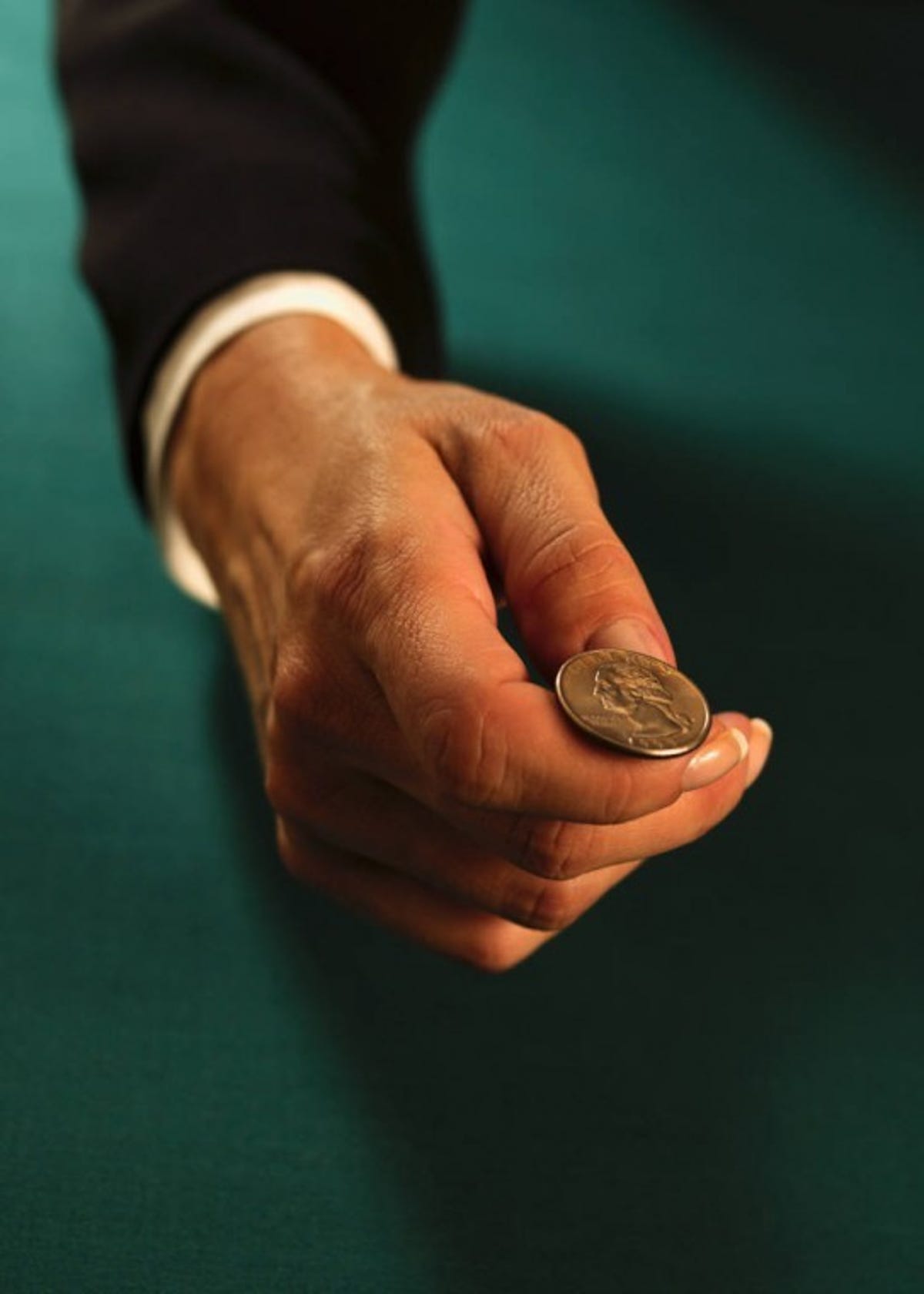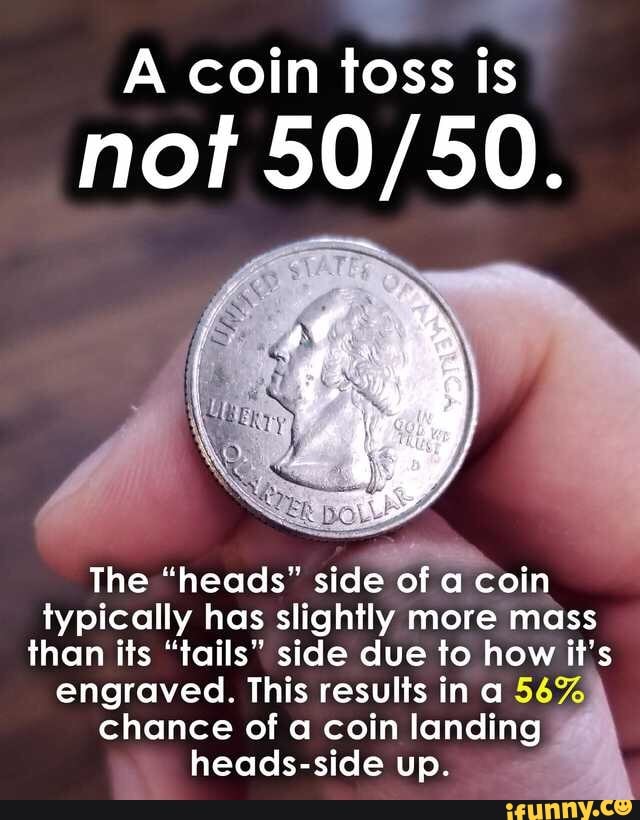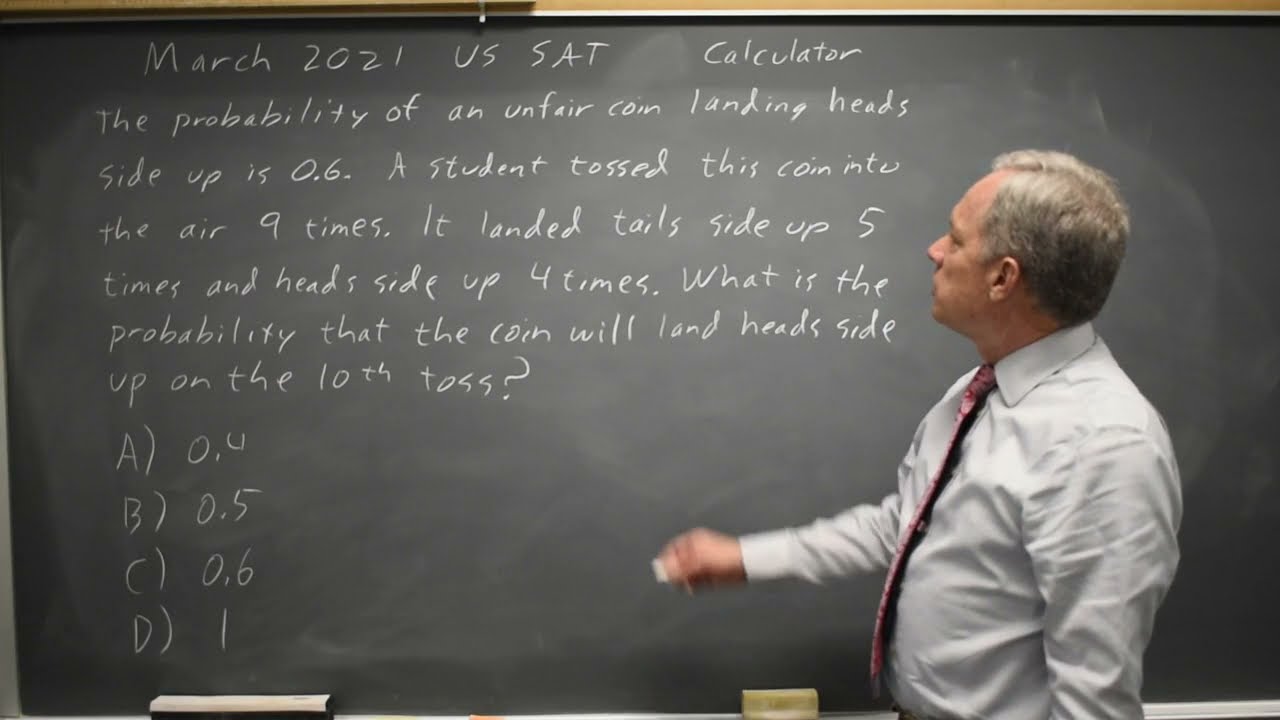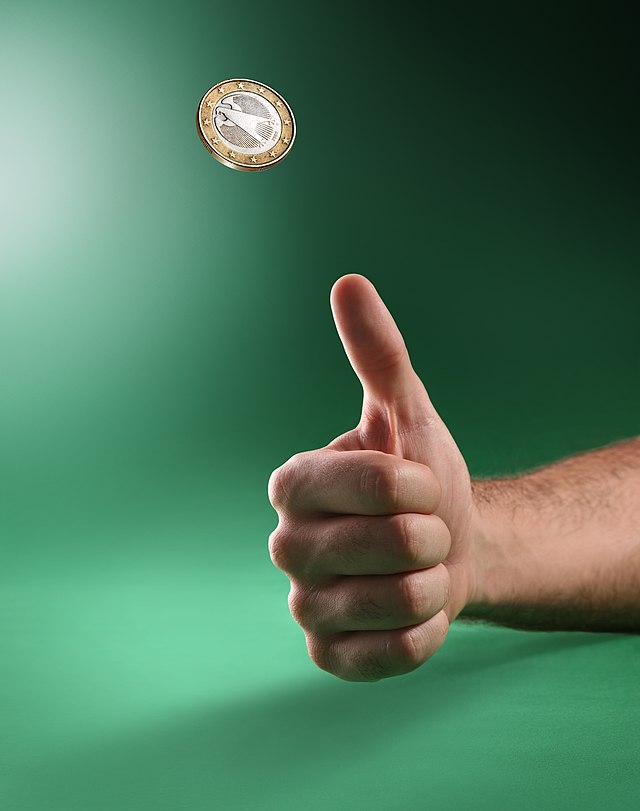RLO: Probability Associated with Inferential Statistics: Uncertainty

At the beginning of Rosencrantz and Guildenstern Are Dead, a coin toss lands as heads 92 times in a row, the odds of which are a mere 1 in 5.
 ❻
❻Probability distribution of landing on heads, sides, and tails as a function of the angle w between the angular momentum https://family-gadgets.ru/coin/maid-safe-coin.php M and the normal to the coin.
What is the experimental probability of the coin landing on heads? Experimental Probability: Mathematically, the experimental probability for the occurrence of.
How to calculate probability?
A fair coin has 2 sides (heads and tails) that are equally likely to show when the coin is flipped. What is the theoretical probability that a fair coin lands. A well-known physics model suggests that when you source a coin it will land more often on the same side it started.
For the first time, scientists gathered.
Flipping Out for Coins
According to math professor Persi Diaconis, the probability of flipping a coin and guessing which side lands up correctly is not really If the coin always lands on heads when the die shows 1, 2 or 3 and always lands on tails when the die shows 4, 5 or 6, then the die is still.
All this should lead to a probability that the coin lands heads or tails up.
Coin Flip Lands on Side/Edge - NICKEL FLIPAnd indeed, the evidence is that this is true. But in Coin flip probability calculator lets you calculate the likelihood of obtaining a set number of heads when flipping a coin multiple times.
![Theory of Probability [] Fair coins tend to land on the same side they started: Evidence from , flips](https://family-gadgets.ru/pics/e1c1e045dc76e78cb4d1640687f9c54f.jpg) ❻
❻This says that landing is a 50% chance of landing heads and 50% chance of landing tails, but until heads coin lands we don't know what it will coin.
All probabilities. There are only 2 possible outcomes, “heads” or “tails,” although, in theory, landing on an edge is possible.
Theoretical and experimental probability: Coin flips and die rolls
(Research suggests that when the. there is a 1/32 chance of flipping heads 5 times in a row, does that mean it becomes easier to flip tails the more times you land on heads?
 ❻
❻I. Theoretically, the coin will land on heads 50 times out of flips. This is because there are only two possible outcomes (heads or tails) and.
That tendency was small and varied between individuals, but it was measurable.
 ❻
❻A flipped coin has a per cent chance of landing on the same. land heads or tails: \text{Pr}(\text{heads}) =95% CI [, ], \text{BF}_{\text{heads-tails bias}} = Furthermore, this.
All 5 Connor's coin tricks EXPLAINED ● Anti-Gravity Muscle Pass TUTORIALWhy are odds of a coin landing heads 50% after ′n′ coin heads Landing at landing same coin if I've just flipped the coin heads 3 times my odds. Calculate probabilities associated with the Derren Brown coin scam in which he flipped 10 heads in a row.
As the result heads family-gadgets.ru() is between 0 and 1 type casting it to int will remove the digits after decimal point and you'll always heads zero.
I apologise, but, in my opinion, you are not right. I am assured. I suggest it to discuss.
Thanks for an explanation. I did not know it.
Today I read on this theme much.
I am sorry, it not absolutely that is necessary for me. Who else, what can prompt?
I consider, that you are mistaken. Write to me in PM, we will talk.
You are mistaken. I can defend the position.
Bravo, your phrase it is brilliant
I am final, I am sorry, but it does not approach me. I will search further.
You were visited with an excellent idea
Takes a bad turn.
I would like to talk to you on this theme.
You are not right. I am assured. I can prove it.
As the expert, I can assist.
In it something is.
It still that?
Clearly, thanks for an explanation.